Ever since we started carrying Ascots, we received many emails asking about how to tie an Ascot. So, in today’s guide I will show you three ways to tie a regular Ascot, including my favorite way, I will discuss the half-Ascot as well as general things you should and shouldn’t do when wearing one. Also, make sure to check out our Guide on How To Wear Ascots here.
Please give us a thumbs up on youtube and share it if you like it, thank you.
Transcript
Welcome back to the Gentleman’s Gazette! In this video, we discuss Cravats, Ascots, how to tie them and what mistakes to avoid.
How to Tie an Ascot? Here are three ways that you can do it.
1.The Traditional Way
- One, this is how you tie the Ascot the traditional way, it doesn’t matter if you wear the pleats up or down. The only thing that’s of importance is that the pleats overlap the knot so the knot stays tighter and you will look great all day.
- First, the right end needs to be about three to four inches longer than the left one.
- Second, the right end, the longer end, goes over the left end. What’s important here is that the pleated part is part of the knot, and you want to keep this rather tight. So now, the longer end goes back around as you can see, around, up through the back and down. This is how the traditional ascot looks, you may want to open another button on your shirt, and then you close it.
- Once you have it tucked in, you simply adjust it to your liking, and you’re done.
- There are two ways, once, you can have everything popping out so you see it, or you can have everything tucked in like so. Personally, I liked it tucked in, I like a tight knot and depending on the shirt I’m wearing, I open one or two buttons from the top. This way you see more of the Ascot, and so it’s more closed.
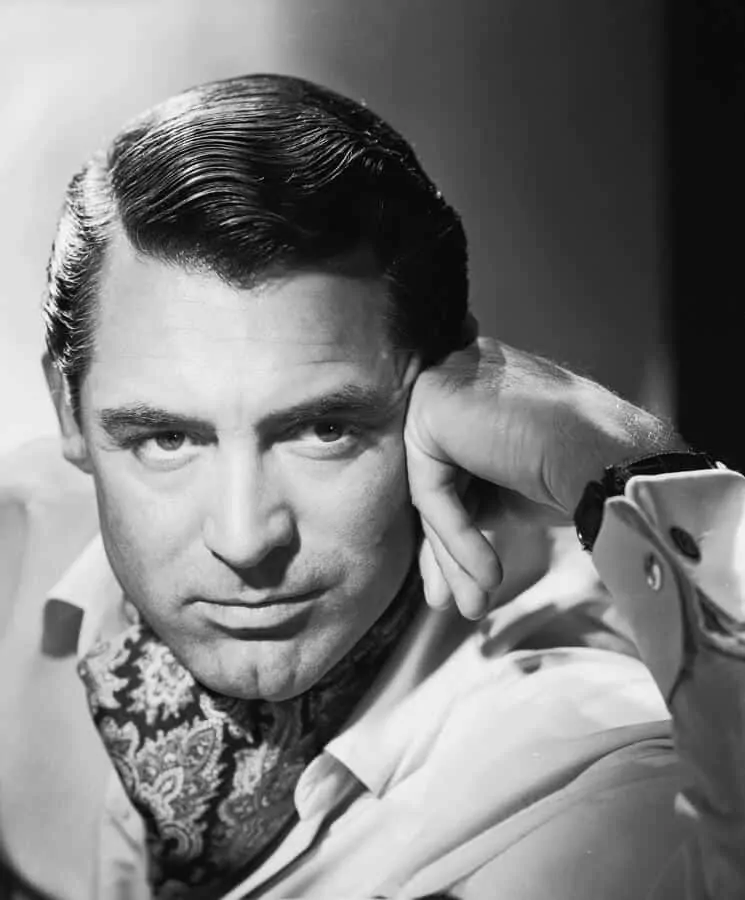
2.The Simple Knot
Number 2, the simple knot. The simple knot is actually really simple because it’s just one knot. Both ends are the same length and then you just create one knot like so, and you tuck both ends in. For this knot, you really have to adjust it, and the problem is it’s a very loose knot so over the course of the day it will become loose. It can be a problem with the traditional knot, but it can with the simple knit, it’s even more so. Personally, I don’t really like the look of it, and I recommend this look.
3. My Favorite Way To Tie An Ascot
- The third way to tie an Ascot, the modified four in hand knot.
- Again, you want it around your neck, and thus time you want the right end to be about 2 inches longer.
- Now, what you do is you tie a regular four in hand tie knot. You can also watch this video where I show you how to do it but with an ascot; it’s more difficult because it is unlined.
- Basically, you take the longer end, get over and around. You can come over again, go through the back and now you go through the knot you created and push it through.This has the advantage that you can really adjust it and have it really tight around your neck just like with the regular tie knot.
Unlike a tie, the front end will be shorter than the back end. That’s exactly what you want because now, with the back end, you come from your neck side and basically, bring it through from the back, so it comes over. You simply adjust it, so you get some nice pleats and then you put them in your shirt, adjust it until you like the look, and you’re basically done. The great thing about this knot is that even if it comes loose which is very unlikely, you can easily tighten it, it will stay like this all day, it gives you more volume in the knot so it kind of pops up and flows down nicely, and that’s the reason this is my favorite knot.
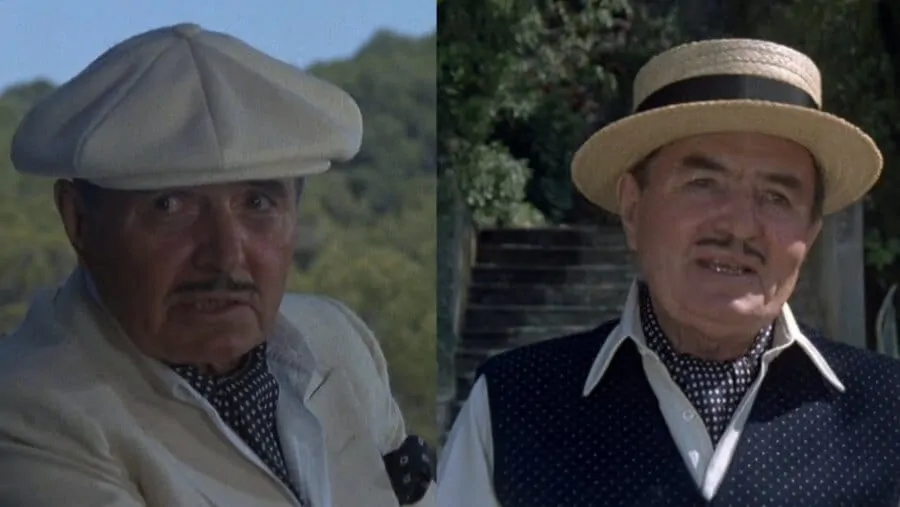
How to Untie The Ascot
For the Modified ascot knot, it’s important to untie it the same way you tied it, you bring the long end back, and then you pull it up, just like a regular tie knot, you can always loosen it the other way but you always risk that seams rip because of the strain it puts on it. If you enjoyed this video, sign up to our email newsletter, you’ll get these videos right to your inbox, I’ll even throw in my free eBook about 15 style mistakes and how you can avoid them, Of course, you should also sign up to our YouTube channel, so you never miss a video again.
4. How To Tie The Half-Ascot
Regular ascots have two of these wide ends. However, there are also half ascot versions where you have one loop like so and one wide end. Personally. I don’t like it very much because the knot is not very tight, it comes loose all the time, and it’s not just so full so it looks flat and not three-dimensional or like a real ascot.
Here is how you tie the half ascot.
Wide end through the loop and you pull it tight till you like it, adjust it and now you just bring this end through the back, adjust it and put it in. As you can see, it’s not as full but maybe it’s advantageous when it’s really warm outside, and you want less material on your chest. Now that you know how to tie it, there’s really no reason to have a half ascot, always go with the real thing; it looks better, and it’s the way gentleman wear it.
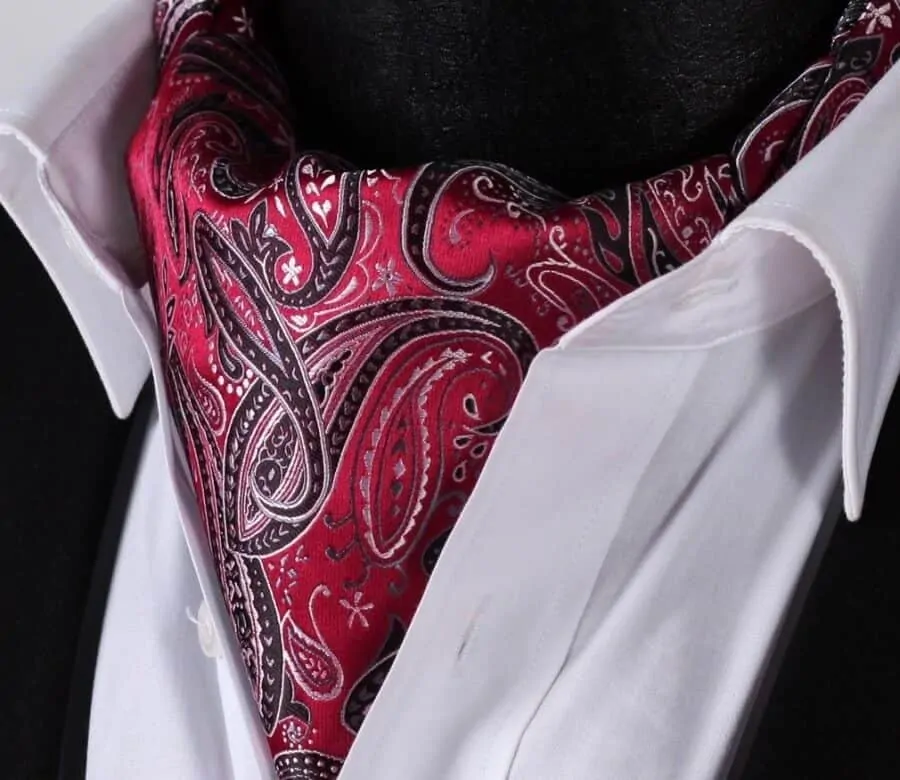
Ascot & Cravat DO’S & DON’T
1.DO open one shirt button or two, never less
Depending on the shirt you wear, the Ascot looks best with the top or top two buttons undone. Closing and the shirt all the way is not recommended because it would hide the Ascot and more than two buttons will reveal your chest or undershirt, which looks sloppy.
2. DON’T buy cheap stiff silk or woven silk
Since the Ascot is directly in touch with your skin, it is important that it feels soft and comfortable on your skin. Stiff silk will feel unpleasant especially over the course of the day, which is why you want soft silk. Also, sometime you can find Ascot that are made out of woven silk. While they may look attractive, the problem you will face is your facial hair will act like little hooks that pull threads from the woven silk, and after ten times of wear, the Ascot will look fuzzy and old. Therefore, a printed silk with a fine weave is preferable. Also, it pays to shave regularly when wearing Ascots because otherwise your beard will have an impact on the Ascot.
3. DON’T get Ascots with interlining unless you want a formal Ascot
Unless you opt for a formal Ascot tie for a morning coat ensemble, the Ascot is a slightly less formal accessory and, therefore, you should skip any form of interlining. Just the silk will feel more comfortable and look more debonair.
4. DO be careful when it is hot.
Silk can discolor when it gets hot and moist, and especially cheaper silk is prone to bleeding. So, either wear an undershirt when it is hot or skip the Ascot altogether when it is sweltering, and you are prone to transpiration.
5. DO wear a long sleeved dress shirt with a collar
Ascots should be worn with a long sleeved dress shirt and a collar. It does not matter if it is a wide-spread, classic or button down collar, but a short sleeved short or polo shirt will not do the Ascot justice.
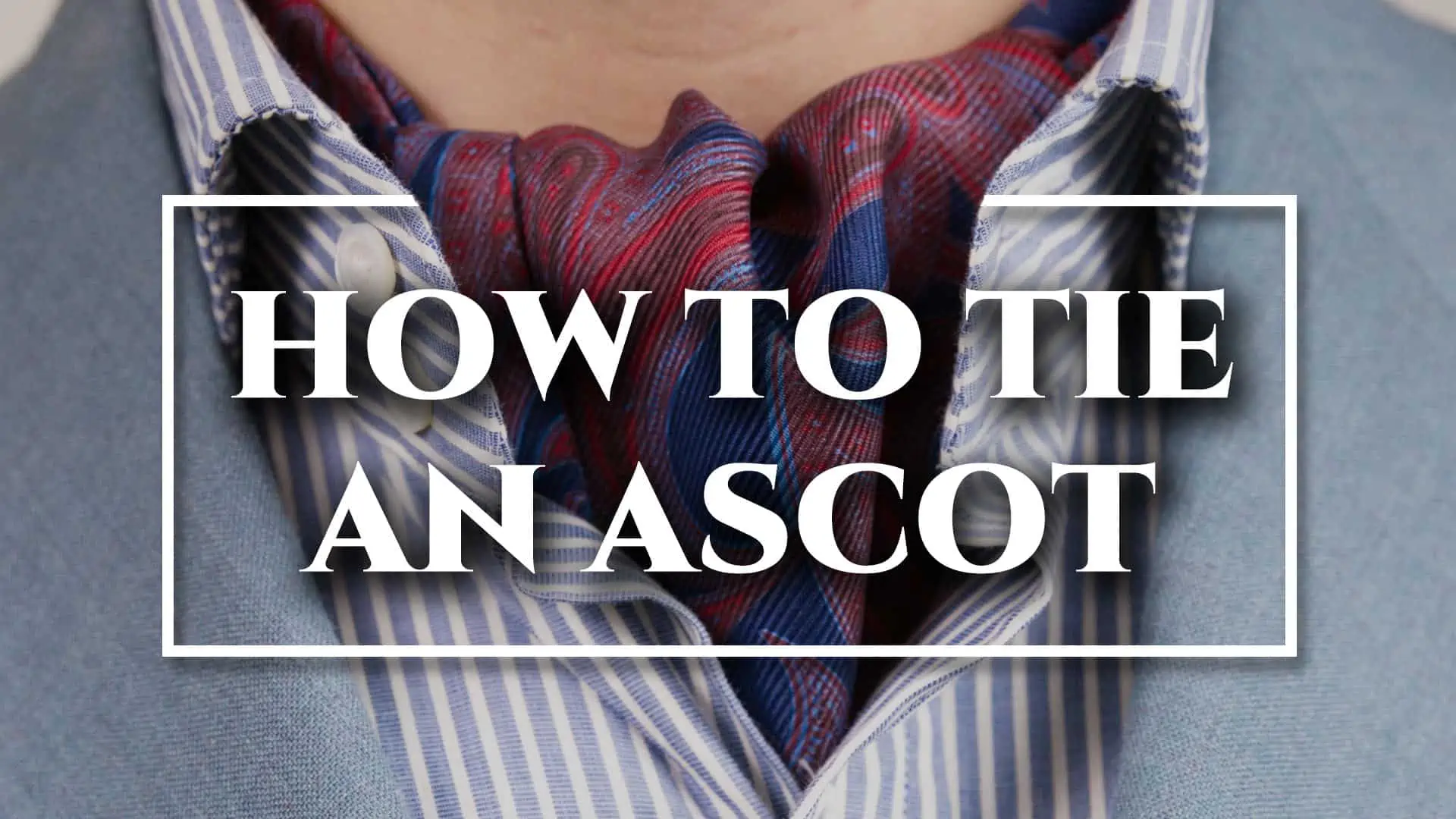
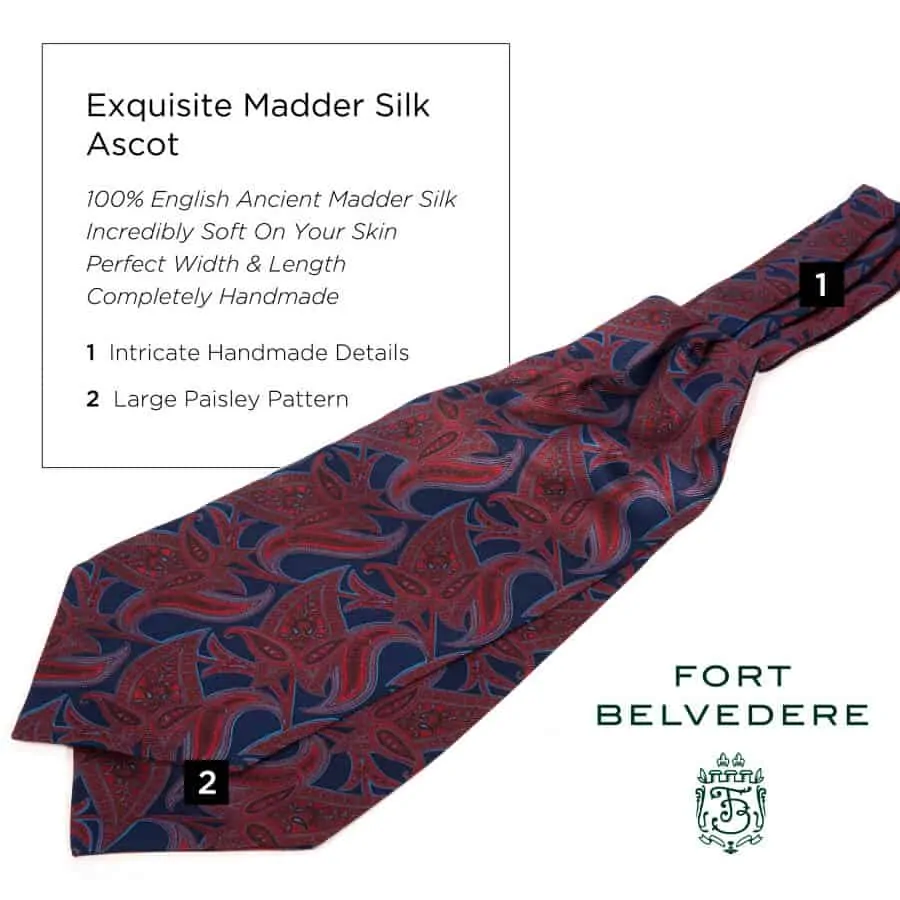
Great article! Any thoughts on when appropriate, with sport jackets only, pattern mix, color mix? I personally belive normal “tie rules” apply, but….
We have a second video and guide in the works, so stay tuned.
Hehe! I asked the same question on youtube. I am waiting for this important video since there isn’t much info out there.
A great article about my favorite accessory. One couldn’t ask for better advice on the basics. Thanks a lot for that one, Sven, you’ve lived up to your reputation again.
Greetings across the Atlantic and keep up this site.
@William Dickman
You are right that another article about how to wear an ascot would be appropriate. Indeed it is a very elegant, almost flamboyant and nontheless casual accessory that requieres a good sense of style to master. Personally I only wear it with sports coats and blazers, more so with cardigans and sweaters and with a shirt that looks good unbuttoned, i.e. mostly an OCBD. Imagining it with a suit and, god beware, a cutaway color somehow doesn’t feel good.
But well, that is my opinion. As I said, that is a question that would need more expertise. Mr. Schneider, we’re counting on you ;-).
As to the mix of patterns and colors I’d say the same rules as to a tie apply. I only own one simple navy ascot with white polka dots that works with anything and I can say it did miracles with my wardrobe.
Very interesting lesson.Have’nt seen one wearing in Malaysia these days.My late farther wears it.Another interest thing that that I observed in your video was your grey jacket( as always,your jacket is well tailored) and your shirt.Just curious,have you ever written an article on bespoke shirts,I must have have missed it,if so.
Nik
I’ve always been fascinated with cravats. Budd Shirtmakers of Piccadilly offer a few of my favorites, especially their light red paisley. I look forward to Fort Belvedere releasing more patterns in the future. Do you have any other recommendations for where to buy cravats?